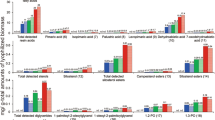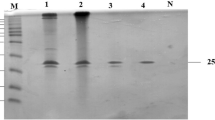Abstract
Previous studies of the metabolic activities of a group of wood-destroying moulds (Merulius niveus, M. tremellosus, M. confluens and Fomes annosus) established the formation of ethyl alcohol, acetaldehyde, acetic and succinic acids by their action on cellulose, glucose and/or xylose1. Inasmuch as acetic acid has been shown to be the last breakdown product which can be isolated of the carbohydrate metabolism of these fungi, it was thought of interest to investigate the dissimilation of acetic acid, in the form of sodium acetate, to elaborate the complete phase sequence of wood-cellulose degradation by these moulds.
This is a preview of subscription content, access via your institution
Access options
Subscribe to this journal
Receive 51 print issues and online access
$199.00 per year
only $3.90 per issue
Buy this article
- Purchase on SpringerLink
- Instant access to full article PDF
Prices may be subject to local taxes which are calculated during checkout
Similar content being viewed by others
References
Nord, Sciarini, Vitucci and Sodi Pallares, Nature, 157, 336 (1946).
Birkinshaw and Findlay, Biochem. J., 34, 82(1940).
Klason, Svensk Kemisk Tidskrift, 135 (1897).
Author information
Authors and Affiliations
Rights and permissions
About this article
Cite this article
NORD, F., VITUCCI, J. Enzyme Studies on the Mechanism of Wood Decay. Nature 160, 224–225 (1947). https://doi.org/10.1038/160224a0
Issue date:
DOI: https://doi.org/10.1038/160224a0
This article is cited by
-
Oxalosis
Klinische Wochenschrift (1957)
-
Enzymatic Hydrolysis of Cellulose by Coniophora cerebella
Nature (1947)



